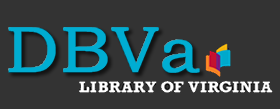CONTENT WARNING
Materials in the Library of Virginia’s collections contain historical terms, phrases, and images that are offensive to modern readers. These include demeaning and dehumanizing references to race, ethnicity, and nationality; enslaved or free status; physical and mental ability; and gender and sexual orientation.
Context
In December 1833, a group of about sixty Black and white men met in Philadelphia and organized the American Anti-Slavery Society to seek the immediate emancipation of enslaved people. The Society viewed slavery as a violation of the principle of equality found in the Declaration of Independence. Members were urged to use non-violent means to work for emancipation, including hosting and attending public lectures, publishing anti-slavery literature, boycotting cotton and other items produced by enslaved labor. Leaders in southern states attempted to silence anti-slavery rhetoric and limit the distribution of such materials through the postal service.
The American Anti-Slavery Society published this broadside, "Slave Market of America," in 1836 to protest slavery and the sale of enslaved people in the District of Columbia. Using quotations from the Bible and some of America's founding documents, it highlights the contradiction of slavery in "The Land of the Free." Using text and woodcut illustrations describing the atrocities of slavery, the creators of the broadside demanded that Congress abolish slavery in the nation's capital. One image on the bottom row depicts a ship at the port of Alexandria taking on a cargo of enslaved people for sale in New Orleans or elsewhere in the South. Another shows the private slave prison of Franklin and Armfield, an Alexandria firm that was one of the largest traffickers in human property in the United States. Slavery continued in the District of Columbia until April 16, 1862, when President Abraham Lincoln signed a bill passed by Congress abolishing slavery there.
Broadsides are single sheets of paper with printed matter intended to be distributed in public. They could be posters announcing events or proclamations, advertisements, or a written argument (often describing political views).
Citation: "Slave Market of America," American Anti-Slavery Society Broadside, 1836, Broadside Collection, Library of Virginia.
Standards
Suggested Questions
Preview Activity
Look at it: Look at the images in the broadside. What do the images reveal about the topics addressed by the broadside?
Post Activities
Analyze: Why do you think the author wrote this broadside? What do you think the author hoped to accomplish?
Another Perspective: How do you think Black Americans might have felt seeing a broadside like this one?
